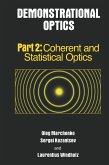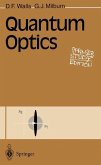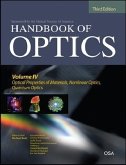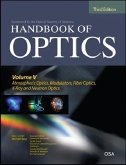Scientists in optics are increasingly confronted with problems that are of a random nature and that require a working knowledge of probability and statistics for their solution. This textbook develops these subjects within the context of optics using a problem-solving approach. All methods are explicitly derived and can be traced back to three simple axioms given at the outset. Students with some previous exposure to Fourier optics or linear theory will find the material particularly absorbing and easy to understand.
This third edition contains many new applications to optical and physical phenomena. This includes a method of estimating probability laws exactly, by regarding them as laws of physics to be determined using a new variational principle.
Hinweis: Dieser Artikel kann nur an eine deutsche Lieferadresse ausgeliefert werden.
This third edition contains many new applications to optical and physical phenomena. This includes a method of estimating probability laws exactly, by regarding them as laws of physics to be determined using a new variational principle.
Hinweis: Dieser Artikel kann nur an eine deutsche Lieferadresse ausgeliefert werden.
From the reviews of the third edition:
"Scientists in optics are increasingly confronted with problems that are of a random nature and that require a working knowledge of probability and statistics for their solutions. This textbook develops these subjects within the context of optics using a problem-solving approach. ... The book is exclusively wealthy in contents. The author generously shares his reflections and assumptions with the reader and puts the unsolved problems yet, what makes this book an especially interesting one." (Dmitry Ostrouchov, Zentralblatt MATH, Vol. 978, 2002)
"Scientists in optics are increasingly confronted with problems that are of a random nature and that require a working knowledge of probability and statistics for their solutions. This textbook develops these subjects within the context of optics using a problem-solving approach. ... The book is exclusively wealthy in contents. The author generously shares his reflections and assumptions with the reader and puts the unsolved problems yet, what makes this book an especially interesting one." (Dmitry Ostrouchov, Zentralblatt MATH, Vol. 978, 2002)







